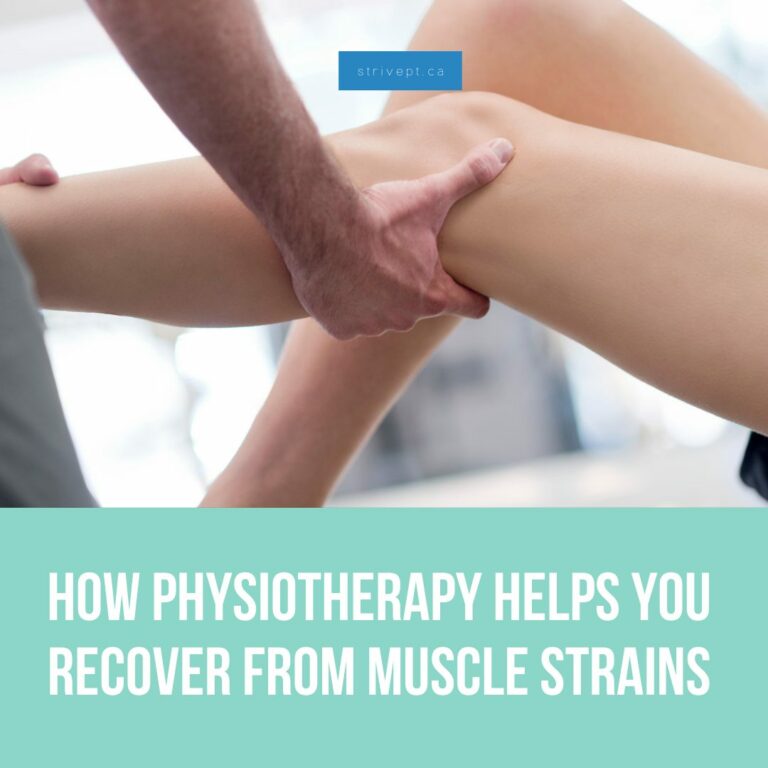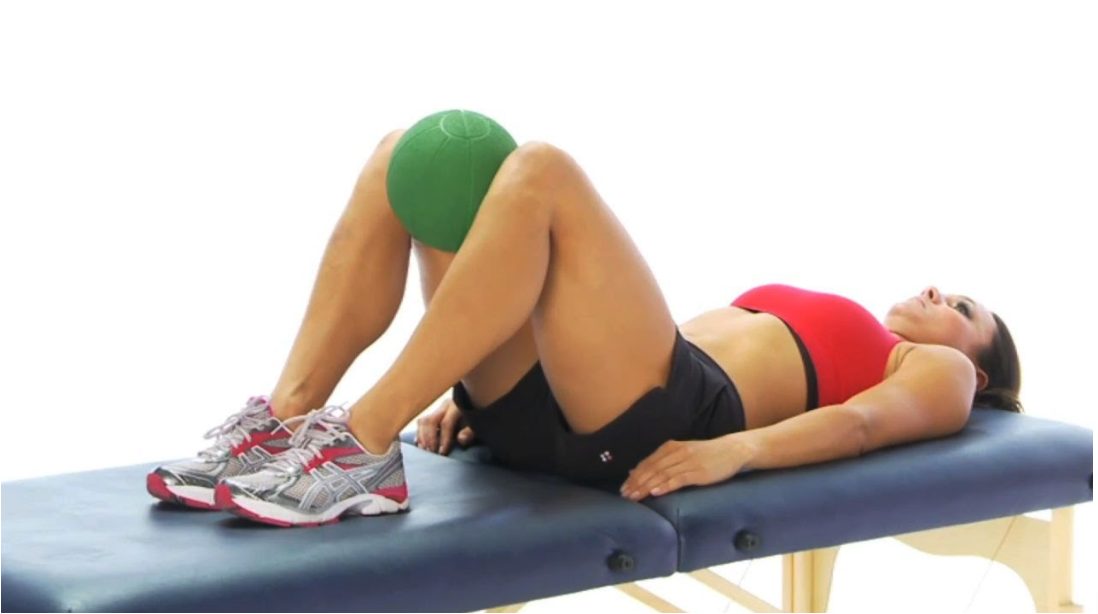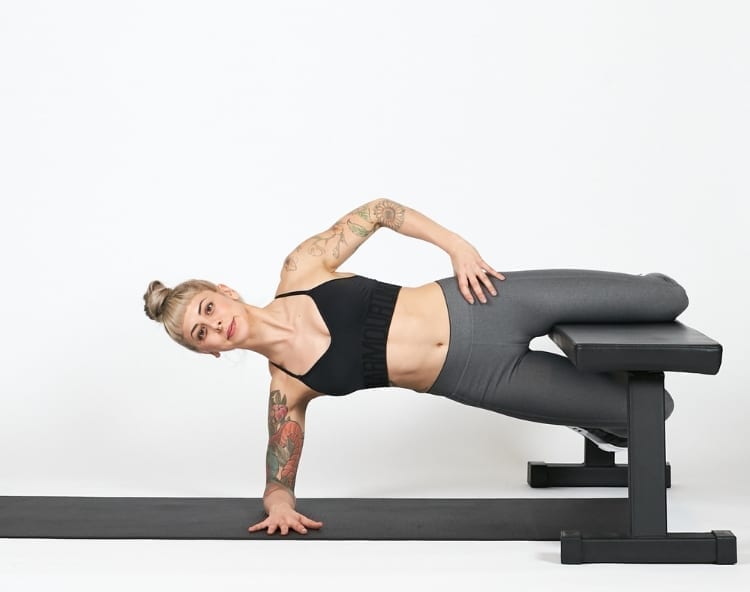
Have you ever experienced a ‘pulled’ muscle when you were doing an exercise or playing a sport? Are you the type of person to just ice it and hope it gets better? Have you found that recovering from these ‘pulled’ muscles seems to take longer than it used to? If you answered yes to any of these questions, then you’re in the right place! A ‘pulled’ muscle is what we physiotherapists call a muscle strain, and today we’re going to talk about how physiotherapy helps you recover from muscle strains faster than the typical ice and rest method. In fact, we’ll go through the exact treatment that I use with my clients to get them back to doing what they love as soon as possible!
What is a muscle strain?
As mentioned before, a ‘pulled’ muscle is actually a muscle strain. What does that mean? Well, a muscle strain is an injury that occurs when a muscle is overexerted. The muscle fibres cannot keep up with the demands or stress that is placed on them, which results in the tearing of those fibres. This can occur in multiple different ways, but most commonly occurs when the muscle is contracted in an overstretched position.
For example, the common groin strain often occurs during soccer, where players need to exert a lot of force with their legs in an outstretched position (e.g. sprinting and changing direction). The degree of muscle fibre tearing determines how severe the strain is. We typically categorize muscle strains into 3 grades:
- Grade 1 (mild): Only a small number of muscle fibres torn. No loss of strength or movement. No swelling or bruising. Pain is usually felt the following day.
- Grade 2 (moderate): A greater number of muscle fibres are torn. There may be significant pain, and loss of strength and movement. There is often bruising and swelling around the affected area.
- Grade 3 (severe): Complete rupture of the muscle fibres meaning the muscle has separated. Complete loss of function and severe swelling and bruising. There may also be a deformity seen.
Certain muscles are also more likely to get strained:
- Muscles crossing multiple joints. For example, your hamstring muscles (back of your thigh) cross both your hip and knee.
- Muscles contracting eccentrically. These are muscles that would help stop movement or slow it down. For example, your quadriceps (front of your thigh) would help you land from a jump.
- Muscles with a lot of fast twitch fibres. These are muscles that work more with fast, high-intensity movements. For example, your quadriceps, hamstrings, and calf muscles would all be working very hard in a full sprint.
Usually we think of muscle strains happening with sports or exercise, but they can also occur outside of these situations as well. Muscle strains can even occur from doing a normal everyday activity, especially if you haven’t been exercising regularly. Muscle strains often happen when we try to do too much activity too soon, after doing too little activity for too long.
How does physiotherapy help?
When you see a physiotherapist after experiencing a muscle strain, the first thing they will do is assess both your injury and your individual situation. Once your physiotherapist completes the assessment, they will be able to determine the severity of your muscle strain, as well as any factors that might affect your recovery. Depending on the time since initial injury, your physiotherapist may advise you to rest, ice, and use compression on the affected area. These techniques can be helpful in the early stages of a muscle strain to manage the pain and swelling.
Your physiotherapist will also advise you on the most appropriate way to get that strained muscle moving. Movement helps with the healing process, and many research studies have shown that early movement of a strained muscle can decrease the time it takes to recover. There is also research now that shows lack of early movement and strengthening of a strained muscle can actually make the injury worse!
So, your physiotherapist will design a plan specifically for you to get that muscle moving just enough to help with healing, but not so much that it causes you more pain. In addition, your physiotherapist will let you know when it is safe to start gently stretching your muscle, as stretching too intensely too soon after the injury can make it worse!
Next, your physiotherapist will help you gradually strengthen the strained muscle. The first step here is usually what we physiotherapists call isometrics. This term just means contracting (squeezing) the muscle without any actual movement. An example of this is the commonly prescribed ball squeeze for a groin strain (pictured below).
During this exercise, you will contract your groin muscles to squeeze the ball, but of course your legs won’t actually move. This is a great place to start because your muscles don’t have to stretch, which should allow you to strengthen without pain or with minimal pain. You can also control how much effort you contract your muscle with, so if it is more painful you squeeze less, or if it is less painful you can squeeze more.
As your muscle recovers, your physiotherapist will guide you on when and how to progress the stretching and strengthening. The next step after isometric exercise, is usually isokinetic exercise. This involves contracting your muscle while moving it. An example of this progression is the Copenhagen plank (picture below).
For this exercise, which also targets the groin muscles, we will raise our hips up off the floor and then slowly lower them back down. Again, this involves both contraction and movement of the groin muscles, which will be more challenging than just contracting the muscles without movement.
Now, this is a very advanced exercise, so make sure you seek the help of a healthcare professional before trying anything like this. Once you gain strength and become comfortable with isokinetic exercises, your physiotherapist may have you progress to plyometric exercises. These are exercises that are explosive, such as running or jumping. If your plan is to return to sport, then your physiotherapist will also help you get back to more sport-specific training.
Since everyone’s goals and activity levels are different, it’s important for your physiotherapist to know what full recovery looks like for you. Some individuals may just want to get back to daily activities, while others may want to return to a high level sport. Of course rehab will and should look different for these different people.
Still not sure what to expect with your injury? Call us at 519-895-2020, or use our online booking tool on www.strivept.ca to book an appointment with one of our knowledgeable physiotherapists, and they will be sure to help you understand your injury.
Cheers,
Liam Newlands
Physiotherapist at Strive Physiotherapy & Performance

